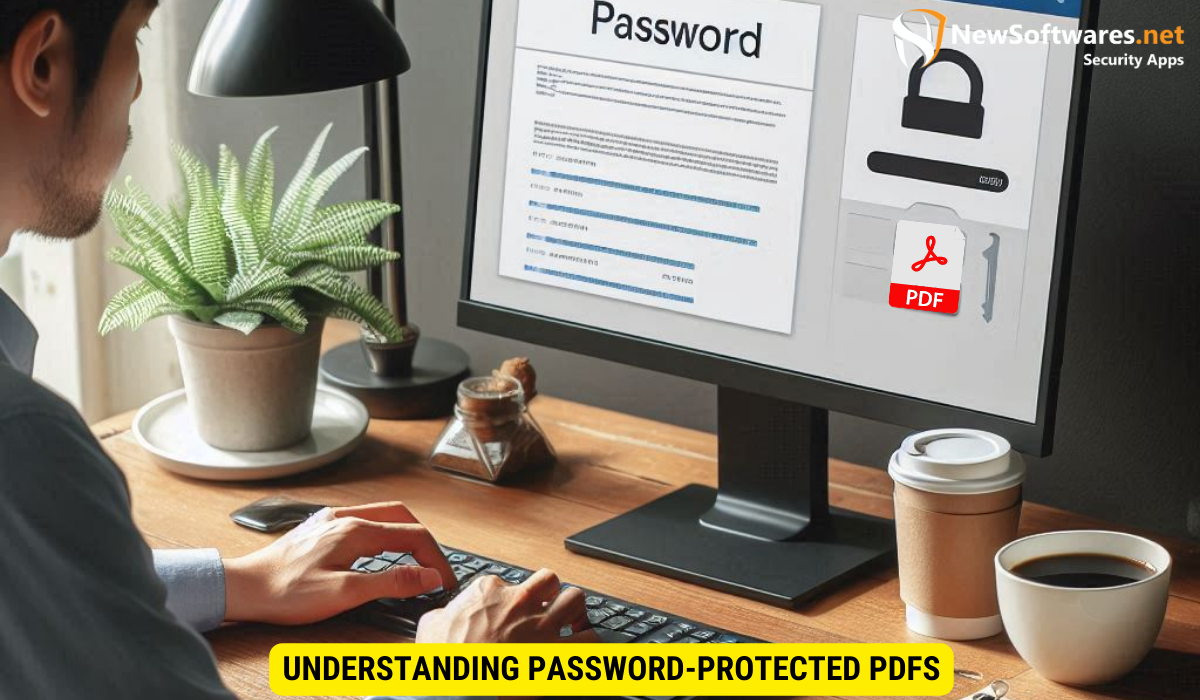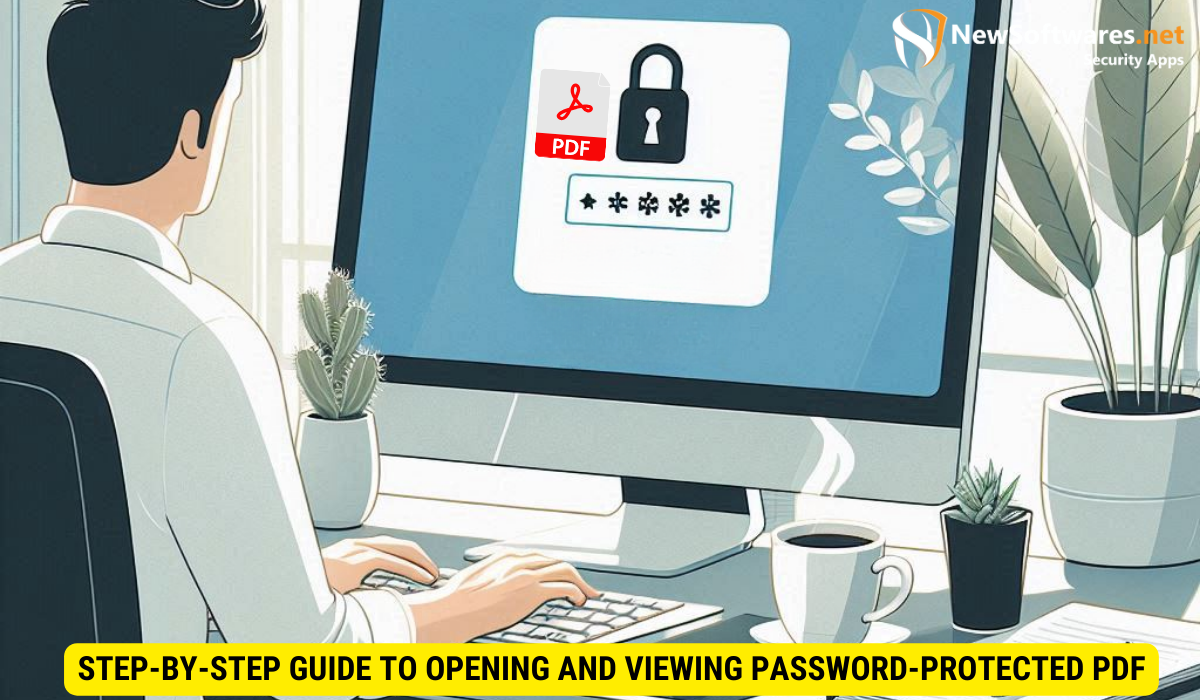To view a password-protected PDF, you generally need to know the password set by the creator of the document. Here’s a simple guide on how to open such a PDF:
-
Locate the PDF file on your device and double-click to open it.
-
Enter the password when prompted to gain access to the document.
If you’re the owner of the document and have forgotten the password, or if you have permission to access the document, there are tools and methods available online that can assist with unlocking password-protected PDF files. However, it’s important to respect the privacy and copyright of the document’s creator.
Are you struggling to view a password-protected PDF? Don’t worry, we’re here to help! In this article, we will guide you through the process of accessing password-protected PDF files. From understanding the purpose of password protection to providing step-by-step instructions, I’ve got you covered. So let’s dive in and learn how to unlock tand view those PDFs!
Understanding Password-Protected PDFs

Before we delve into the process, let’s take a moment to understand why PDFs are password-protected in the first place. The purpose of password protection is to safeguard sensitive information and restrict unauthorized access. PDFs can contain confidential documents, personal data, financial records, or legal papers that should only be accessible to specific individuals.
When it comes to password protection, PDFs offer various security levels. These levels range from basic password encryption to more advanced techniques such as digital signatures and certificate-based security. It’s important to comprehend these different levels to better navigate the unlocking process.
Furthermore, password-protected PDFs play a crucial role in ensuring data privacy and compliance with regulations such as the General Data Protection Regulation (GDPR) and Health Insurance Portability and Accountability Act (HIPAA). By encrypting PDF files with passwords, organizations can mitigate the risk of data breaches and protect sensitive information from falling into the wrong hands.
Additionally, the evolution of password protection technology has led to the development of multifactor authentication methods for PDFs. These methods may include biometric verification, one-time passwords, or security questions, adding an extra layer of security to the document access process.
Necessary Tools for Opening Protected PDFs
Software Options
To access password-protected PDFs, you’ll need suitable software designed to handle the encryption. There are numerous reputable software options available, both free and paid, that can help you open and view protected PDF files. Some popular choices include Adobe Acrobat, Nitro PDF, and Foxit Reader. These tools provide the necessary functionalities to handle encrypted files securely.
In addition to the software mentioned, there are specialized tools specifically tailored for cracking password-protected PDFs. These tools utilize advanced algorithms to bypass encryption and provide access to the content within the files. While these tools can be effective, it’s important to use them responsibly and ensure you have the legal right to access the protected PDF.
Online Services
If you prefer not to install additional software on your device, online services can also assist you in viewing password-protected PDFs. Several trusted websites allow you to upload your encrypted file and provide you with a decrypted version that you can access online. However, exercise caution when using these services, as your sensitive data could potentially be at risk. Choose reputable platforms and read user reviews to ensure the security of your information.
Furthermore, some online services offer additional features such as batch decryption, where you can upload multiple protected PDFs simultaneously for efficient processing. This can be particularly useful for users dealing with a large number of encrypted files or for businesses requiring a streamlined decryption process. Always prioritize data security and privacy when utilizing online services for handling protected PDFs.
Legal Considerations When Accessing Protected PDFs
Copyright Laws and Digital Rights
It’s vital to respect copyright laws and digital rights when dealing with password-protected PDFs. Always ensure that you have the proper authorization to access and view the files. Unauthorized access could infringe upon intellectual property rights and lead to legal consequences. If you are unsure about the legality of accessing a password-protected PDF, seek advice from legal professionals or the document owner before proceeding.
Furthermore, it’s important to note that some password-protected PDFs may contain sensitive information that is protected by privacy laws. Accessing such files without proper authorization could not only violate copyright laws but also breach data protection regulations. Understanding the legal framework surrounding protected PDFs is essential to avoid any potential legal liabilities.
Ethical Implications
Additionally, it is important to consider the ethical implications of bypassing password protection. Respect the privacy of others and avoid accessing protected PDFs without proper consent. Be mindful of potential conflicts of interest or breaches of trust that could arise from accessing confidential information. Balancing legal and ethical considerations is crucial when dealing with password-protected files.
Moreover, individuals should be aware of the potential consequences of unauthorized access to password-protected PDFs, such as reputational damage or strained relationships with the document owner. Upholding ethical standards in the digital realm is just as important as complying with legal requirements. Always prioritize integrity and transparency when handling protected documents to maintain trust and credibility in professional and personal interactions.
Step-by-Step Guide to Opening and Viewing Password-Protected PDF

Step 1: Locating the PDF
The first step in unlocking a password-protected PDF is obtaining the file. Whether it’s stored on your computer, received via email, or downloaded from the internet, ensure you have the necessary access to the encrypted file. Once you have identified the location, proceed to the next step.
When searching for the PDF file, remember that the document may be saved in various folders on your computer or within your email attachments. It’s essential to keep track of where you save such files to avoid any confusion during the unlocking process. Additionally, if you downloaded the PDF from the internet, be cautious of the source to prevent any potential security risks.
Step 2: Inputting the Correct Password
To unlock the PDF, you will need the password set by the document owner. Make sure you have the correct password before attempting to open the file. Be cautious while entering the password, as most PDF software is case-sensitive. If you’re unsure about the password, check with the document owner or refer to any relevant communication where the password might have been shared.
It’s important to note that passwords are case-sensitive, meaning that uppercase and lowercase letters are treated differently. Take your time when entering the password to ensure accuracy and prevent any unnecessary errors. In case the password contains special characters or numbers, pay close attention to ensure each character is input correctly.
Step 3: Troubleshooting Common Issues
Occasionally, you might encounter issues when attempting to unlock a password-protected PDF. If you receive an “incorrect password” error or are unable to access the file, try double-checking the password for accuracy. Pay attention to spelling, capitalization, and the correct use of special characters, as these can significantly impact the success of unlocking the PDF file. If problems persist, consult the software’s support documentation or consider seeking assistance from IT professionals.
If troubleshooting on your own proves challenging, consider reaching out to the document owner for assistance. They may be able to provide additional insights or even reset the password if necessary. Remember to keep communication clear and concise to expedite the process of unlocking the PDF file.
Tips for Managing Password-Protected PDFs
Organizing Your Passwords
As you work with multiple password-protected PDFs, it’s essential to keep your passwords well-organized and secure. Consider using a password manager to store and manage your passwords. This way, you’ll have quick access to your passwords when needed and reduce the risk of forgetting or misplacing them.
Ensuring Your PDFs Are Secure
While using password protection is vital for sensitive PDFs, it’s equally important to ensure the overall security of your digital files. Regularly update your PDF software to benefit from the latest security features and patches. Additionally, consider using encryption software for your entire computer and regularly backing up your files to prevent data loss.
Key Takeaways
- Password protection safeguards sensitive information in PDFs and restricts unauthorized access.
- Use software options or online services to access password-protected PDFs.
- Consider the legal and ethical implications before accessing protected files.
- Follow a step-by-step guide to open password-protected PDFs, including locating the file, inputting the correct password, and troubleshooting common issues.
- Manage your passwords and ensure the overall security of your PDFs and digital files.
FAQs
1. Can I access a password-protected PDF without the correct password?
No, without the correct password, it is not possible to access a password-protected PDF. The password is essential for decrypting the file and ensuring its security.
2. Are online services secure for unlocking password-protected PDFs?
While many online services provide secure decryption functionality, there is always a risk associated with uploading and sharing sensitive data online. Ensure you choose reputable platforms and read user reviews before using online services for unlocking protected PDFs.
3. How do I create a strong password for my PDFs?
To create a strong password for your PDFs, use a combination of uppercase and lowercase letters, numbers, and special characters. Avoid using easily guessable information such as personal details or common words. Additionally, make your password at least eight characters long.
4. Is it legal to access someone else’s password-protected PDF without their permission?
Accessing someone else’s password-protected PDF without their permission could potentially infringe upon their privacy and intellectual property rights. It’s important to respect the legal and ethical implications and seek proper authorization before accessing confidential information.
5. Can I remove password protection from a PDF I don’t have permission to edit?
No, removing password protection from a PDF without proper authorization would be considered a violation of the owner’s rights. It is essential to respect the permissions set by the document owner and seek their consent if you require additional access.
